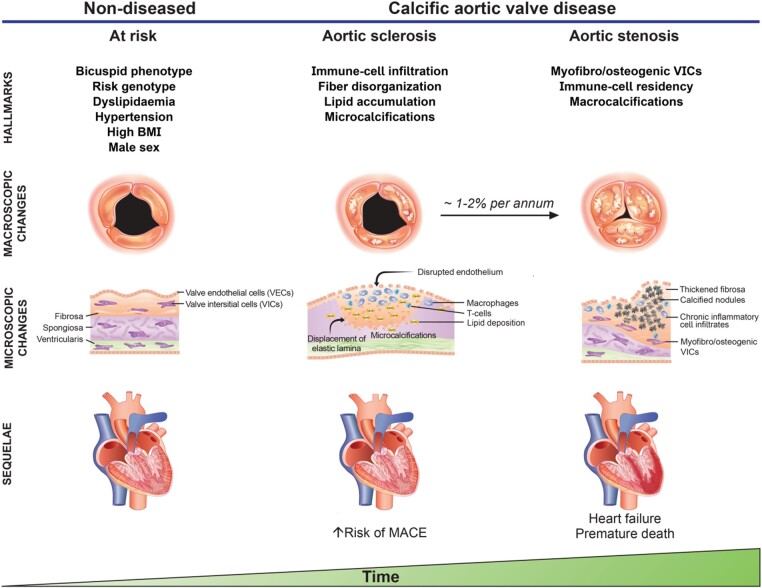Figure 1.
Risk factors, structural changes and sequelae of calcific aortic valve disease at different disease stages. A variety of risk factors, including a bicuspid phenotype, dyslipidaemia, hypertension, diabetes, and increased body mass index enhance the risk to develop calcific aortic valve disease. Endothelial disruption, lipid accumulation, immune-cell infiltration and collagen fibre disorganization occur early in the disease process, with fine-stippled mineralisations being a hallmark of early disease stages. Of note, patients without left ventricular outflow obstruction but sclerotic changes of the aortic valve are at increased risk for major adverse cardiovascular events, likely mediated by the frequent co-existence of coronary atherosclerosis. While the rate of transition from aortic sclerosis to symptomatic aortic valve stenosis varies considerably between patients, findings from the population-based Cardiovascular Health Study1 suggest that 1–2% of patients with aortic sclerosis progress to aortic stenosis annually, of which three-quarter develop heart failure, undergo valve replacement or die within 2 to 5 years of follow-up.

